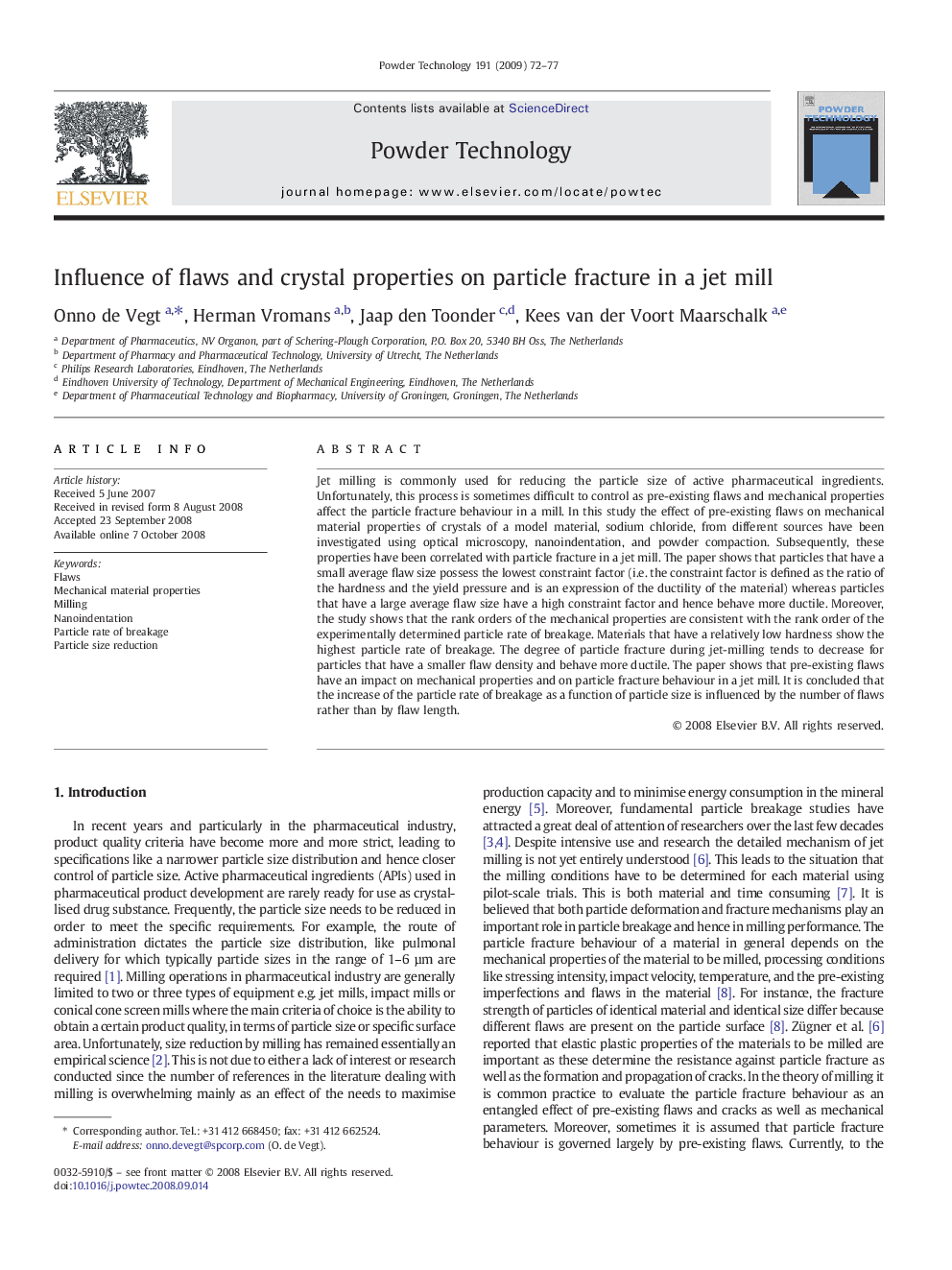| Article ID | Journal | Published Year | Pages | File Type |
|---|---|---|---|---|
| 238566 | Powder Technology | 2009 | 6 Pages |
Jet milling is commonly used for reducing the particle size of active pharmaceutical ingredients. Unfortunately, this process is sometimes difficult to control as pre-existing flaws and mechanical properties affect the particle fracture behaviour in a mill. In this study the effect of pre-existing flaws on mechanical material properties of crystals of a model material, sodium chloride, from different sources have been investigated using optical microscopy, nanoindentation, and powder compaction. Subsequently, these properties have been correlated with particle fracture in a jet mill. The paper shows that particles that have a small average flaw size possess the lowest constraint factor (i.e. the constraint factor is defined as the ratio of the hardness and the yield pressure and is an expression of the ductility of the material) whereas particles that have a large average flaw size have a high constraint factor and hence behave more ductile. Moreover, the study shows that the rank orders of the mechanical properties are consistent with the rank order of the experimentally determined particle rate of breakage. Materials that have a relatively low hardness show the highest particle rate of breakage. The degree of particle fracture during jet-milling tends to decrease for particles that have a smaller flaw density and behave more ductile. The paper shows that pre-existing flaws have an impact on mechanical properties and on particle fracture behaviour in a jet mill. It is concluded that the increase of the particle rate of breakage as a function of particle size is influenced by the number of flaws rather than by flaw length.
Graphical abstractIn this study the effect of pre-existing flaws on mechanical material properties of crystals of a model material, sodium chloride, from different sources have been investigated using optical microscopy, nanoindentation, and powder compaction. Subsequently, these properties have been correlated with particle fracture in a jet mill. Materials that have a relatively low hardness show the highest particle rate of breakage. The degree of particle fracture during jet-milling tends to decrease for particles that have a larger average flaw size and behave more ductile.Figure optionsDownload full-size imageDownload as PowerPoint slide
